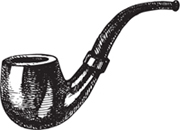
But there they were, in the heart of it; on ‘Change, amongst the merchants; who hurried up and down, and chinked the money in their pockets, and conversed in groups, and looked at their watches, and trifled thoughtfully with their great gold seals; and so forth, as Scrooge had seen them often.
The first place the Ghost of Christmas Yet to Come brings Scrooge is the Exchange. Bankers and businessmen who owned counting houses bought and sold lists of debtors in the halls and steps of the Royal Stock Exchange. They destroyed many lives in doing so.
Charles Dickens Jr. wrote, “[The] Royal Exchange was opened by Queen Victoria on January 1st, 1845. It was built after the designs of Sir W. Tite, and cost no less than £150,000. The old Exchange, which occupied the present site, was built after the Great Fire, and again suffered from the same element in 1838. The first Exchange was opened by Queen Elizabeth in 1570, who, by her herald, declared the house to be ‘The Royal Exchange.’ Sir Thomas Gresham introduced exchanges into England, but they had been popular in most of the commercial cities of Italy, Germany, and the Netherlands, many years previous to their adoption in England.”
Dickens loathed the Royal Exchange, as seen in his diary entry from January 10, 1838, when he wrote, “At work all day and to a quadrille party at night. City people and rather dull. Intensely cold coming home, and vague reports of a fire somewhere. Frederick [mentions] the Royal Exchange, at which I sneer most sagely. . . .” The next day he wrote, “To-day the papers are full of it, and it was the Royal Exchange. . . . Called on Browne and went with him to see the ruins, of which we saw much as we should have done if we had stopped home.” Despite his dislike of what the Exchange stood for, it was a popular milestone in his nightly walks and was surely on his mind and inspired some part of his story.